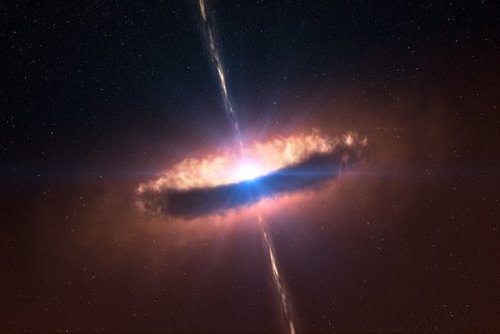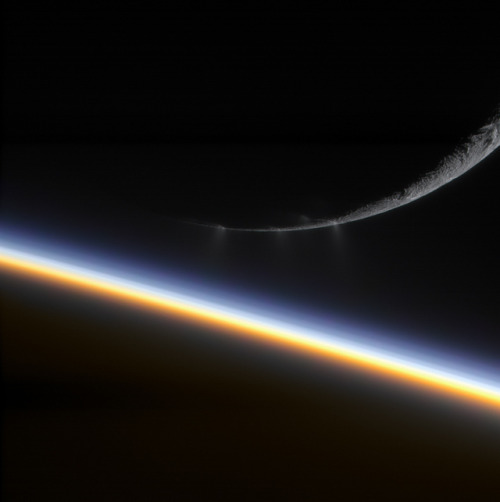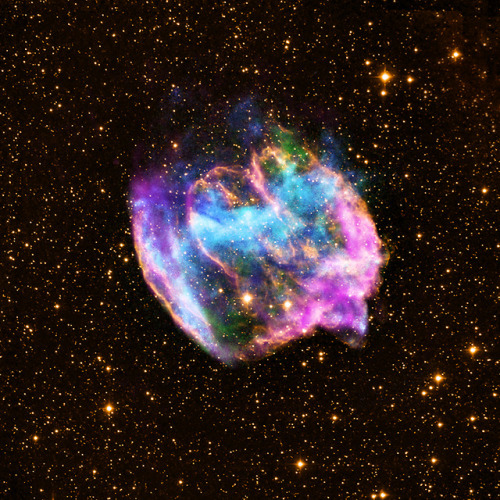What Is A Protostar?




What is a protostar?
The formation of stars begins with the collapse and fragmentation of molecular clouds into very dense clumps. These clumps initially contain ~0.01 solar masses of material, but increase in mass as surrounding material is accumulated through accretion. The temperature of the material also increases while the area over which it is spread decreases as gravitational contraction continues, forming a more stellar-like object in the process. During this time, and up until hydrogen burning begins and it joins the main sequence, the object is known as a protostar.
This stage of stellar evolution may last for between 100,000 and 10 million years depending on the size of the star being formed. If the final result is a protostar with more than 0.08 solar masses, it will go on to begin hydrogen burning and will join the main sequence as a normal star. For protostars with masses less than this, temperatures are not sufficient for hydrogen burning to begin and they become brown dwarf stars.
Protostars are enshrouded in gas and dust and are not detectable at visible wavelengths. To study this very early stage of stellar evolution, astronomers must use infrared or microwave wavelengths.
Protostars are also known as Young Stellar Objects (YSOs).
More Posts from Astrosciencechick and Others
❤️

Female Physicist’s moodboard <3


NGC 6888: The Crescent Nebula

NGC 2736: The Pencil Nebula
Image Credit: Howard Hedlund & Dave Jurasevich, Las Campanas Obs.
![Carina Nebula [ 564 X 888]](https://64.media.tumblr.com/12e8e14fcca9b5df73af77419d21078e/tumblr_phe02rajzq1rcl722o1_540.jpg)
Carina nebula [ 564 x 888]

Venus and the Triply Ultraviolet Sun : An unusual type of solar eclipse occurred in 2012. Usually it is the Earth’s Moon that eclipses the Sun. That year, most unusually, the planet Venus took a turn. Like a solar eclipse by the Moon, the phase of Venus became a continually thinner crescent as Venus became increasingly better aligned with the Sun. Eventually the alignment became perfect and the phase of Venus dropped to zero. The dark spot of Venus crossed our parent star. The situation could technically be labeled a Venusian annular eclipse with an extraordinarily large ring of fire. Pictured here during the occultation, the Sun was imaged in three colors of ultraviolet light by the Earth-orbiting Solar Dynamics Observatory, with the dark region toward the right corresponding to a coronal hole. Hours later, as Venus continued in its orbit, a slight crescent phase appeared again. The next Venusian transit across the Sun will occur in 2117. via NASA


Enceladus and Saturn
Image credit: Gordan Ugarkovic


The highly distorted supernova remnant shown in this image may contain the most recent black hole formed in the Milky Way galaxy. The image combines X-rays from NASA’s Chandra X-ray Observatory in blue and green, radio data from the NSF’s Very Large Array in pink, and infrared data from Caltech’s Palomar Observatory in yellow.
Credits: X-ray: NASA/CXC/MIT/L.Lopez et al; Infrared: Palomar; Radio: NSF/NRAO/VLA
-
 lesbianmasterchief liked this · 3 months ago
lesbianmasterchief liked this · 3 months ago -
 sochiase liked this · 3 months ago
sochiase liked this · 3 months ago -
 kingslime337 reblogged this · 4 months ago
kingslime337 reblogged this · 4 months ago -
 bcloude liked this · 10 months ago
bcloude liked this · 10 months ago -
 sublimeproxy liked this · 2 years ago
sublimeproxy liked this · 2 years ago -
 moonincapricorn liked this · 2 years ago
moonincapricorn liked this · 2 years ago -
 fireball763 liked this · 3 years ago
fireball763 liked this · 3 years ago -
 onlineengima liked this · 3 years ago
onlineengima liked this · 3 years ago -
 bigpapi504 liked this · 3 years ago
bigpapi504 liked this · 3 years ago -
 princessnijireiki liked this · 3 years ago
princessnijireiki liked this · 3 years ago -
 aerstic-spire reblogged this · 3 years ago
aerstic-spire reblogged this · 3 years ago -
 jabyerah-blog liked this · 3 years ago
jabyerah-blog liked this · 3 years ago -
 lsdrew liked this · 3 years ago
lsdrew liked this · 3 years ago -
 sebastianflores95 liked this · 3 years ago
sebastianflores95 liked this · 3 years ago -
 bigbc420 liked this · 3 years ago
bigbc420 liked this · 3 years ago